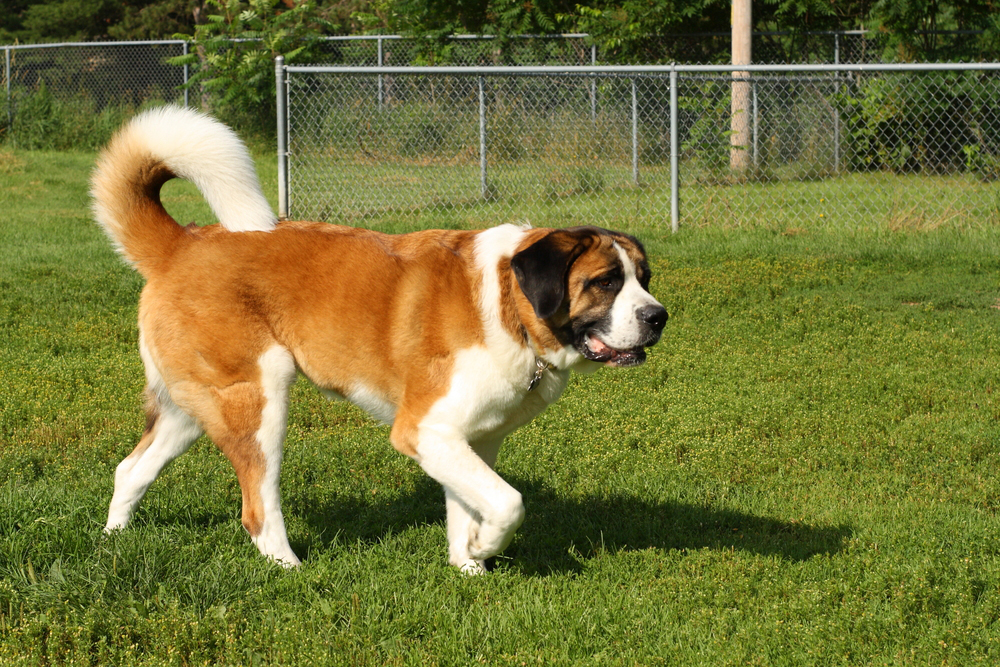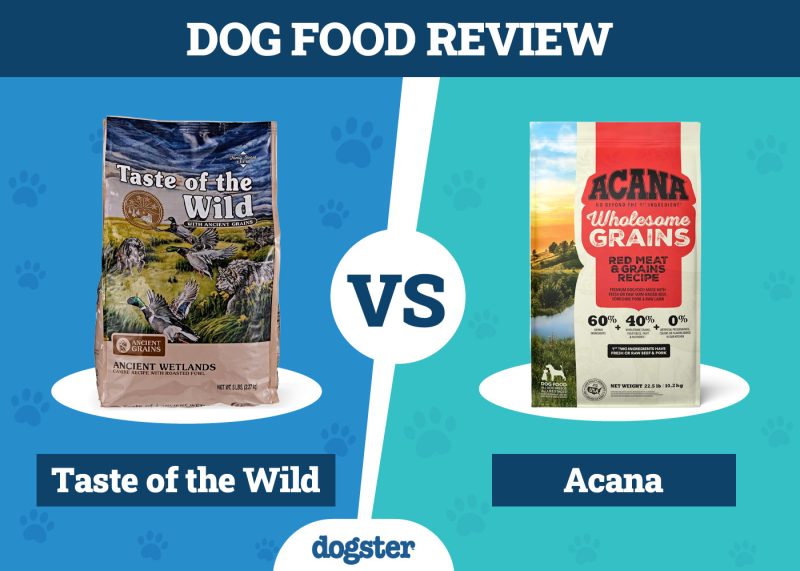In this article
View 2 More +Nothing invokes the memory of childhood pastimes like the movie Peter Pan. When it first hit the scene in 1953, Peter Pan captured the hearts of children all over America. Not only did we fall in love with Peter Pan, but we also quickly fell in love with Nana, the family’s nursemaid–who just happened to be a dog.
And in 2002 when Disney made the Peter Pan sequel “Return to Never Land” many of us remembered why we grew to enjoy the adventures of Never Land in the first place. Nana was loyal and funny and kept us entertained throughout the film. You may have thought, I’d love a ‘Nana of my own,’ so what breed of dog is Nana? A Newfoundland or St. Bernard.

Nana’s Breed: A Newfoundland or a St. Bernard?
There is some debate about Nana’s true breed, as it differs between reading the original book or the Disney adaptation.
In J.M. Barrie’s original Peter Pan book, Nana is a Newfoundland dog. J.M. Barrie himself had a Newfoundland and based Nana’s character after this big, gentle breed. Newfoundlands are known for being big softies with strong caretaking instincts, so it is little wonder that they would be well-suited to play the role of the Darling children’s nursemaid.
However, Disney’s animated version portrayed Nana as a St. Bernard. This could be because St. Bernards are already familiar and recognized by audiences as large, loveable and protective dogs. St. Bernards and Newfoundlands share some physical traits, such as their large size and thick fur, which might explain the breed change in the movie.


Newfoundlands: The Original Nana
Since Nana was originally a Newfoundland in Peter Pan, it’s worth taking a closer look at this majestic breed.
Appearance & History of Newfoundlands
Newfoundlands are giant working dogs originally bred in Canada, specifically in Newfoundland, where they were used for water rescues and heavy labor. These dogs have webbed feet and thick, water-resistant coats, making them excellent swimmers. Their average height ranges from 26 to 28 inches, and they typically weigh 100 to 150 pounds.
Their coats are usually black, brown, gray, or Landseer (black and white). Compared to St. Bernards, Newfoundlands have a fluffier, softer coat and a more boxy face.

Temperament & Personality
Newfoundlands are friendly, gentle, and very intelligent. They are often called “nanny dogs” because they are patient and protective of children, which aligns perfectly with Nana’s role in Peter Pan. Unlike some large breeds, Newfoundlands are not overly energetic but require regular exercise and mental stimulation.
Health Concerns
Like St. Bernards, Newfoundlands are prone to some common health issues:
- Hip & Elbow Dysplasia
- Heart Disease
- Bloat (Gastric Torsion)
- Obesity

St. Bernards: The Disney Nana
The St. Bernard version of Nana, as depicted in Disney’s Peter Pan, is very much like Newfoundlands in terms of size and temperament.

Appearance & History of St. Bernards
The St. Bernard dogs are believed to have come from Switzerland. Their use in rescue dog duties in the Alps can be traced back to the late 1600s. AKC (American Kennel Club) recognition of this breed was achieved in 1885. The average St. Bernard is about 25 to 27 inches in height and weighs anywhere from 110 to 215 pounds. Their coat is medium length, dense, and has a smooth texture. There are two types of St. Bernards, short-haired and long-haired. On average these dogs will have anywhere from 8 to 9 years.
Temperament & Personality
St. Bernards are famously gentle, patient, and affectionate dogs. Like Newfoundlands, they are known for being excellent family pets, especially for households with children. They’re often referred to as “gentle giants” due to their sweet nature and protective instincts.
Despite their size, St. Bernards are not overly energetic and are content with moderate exercise. They tend to be calm, laid-back dogs who love being around people, making them great for families looking for a loving, low-maintenance companion.
However, St. Bernards can be a little stubborn at times, so early training and socialization are important. They are also big softies and don’t like to be left alone for long periods. They thrive best when they are part of the family and included in daily activities.

Health Concerns
- Dental Issues
- Infections
- Obesity
- Bloat
- Heart Disease (Dilated Cardiomyopathy)
Both breeds require regular vet checkups and a balanced diet to maintain good health.
Wrapping Things Up
Nana, the beloved nursemaid from the popular Peter Pan movies, was introduced as a St. Bernard in Disney movies; however, the original book describes her as a Newfoundland. Both dog breeds are known for being affectionate and gentle giants with protective instincts that make great family pets.
Regardless of her breed, Nana is a beloved fictional dog that captured the hearts of many, with her devoted role to the Darling children.
Featured Image Credit: Characters by The Walt Disney Company. All rights reserved to the copyright owners.



















